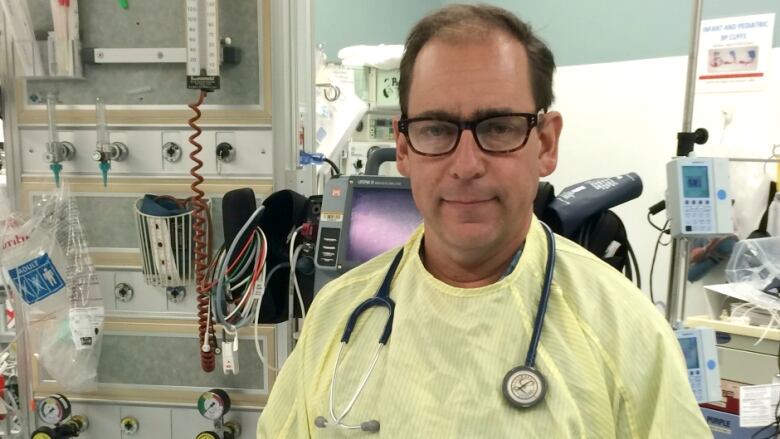Alberta study shows hospitalizations for respiratory illnesses plummeted early in pandemic
Roughly 2,500 fewer Albertans hospitalized for COPD during first months of pandemic

A new Alberta study that shows a drop in hospitalizations for respiratory illnesses during the early part of the pandemic is sparking questions about the future role that public health measures such as masking could play in keeping viruses at bay.
The research came about after ER doctors started noticing an unusual trend:fewer people coming to the emergency room who requiredadmission for respiratory problems.
Researchers compared Alberta hospital data from March to September of 2020 with the previous year and documented a reduction in the proportion of overall admissions forillnesses caused by viruses or chronic conditions exacerbated bythem.
"We saw something quite remarkable. We saw there was a dramatic drop in hospitalizations for COPD [and]a significant drop for hospitalizations related to pneumonia that weren't COVID-related," said co-author Dr. Eddy Lang, a Calgary emergency room physician and University of Calgary professor.
"I can tell you as well that asthma was way down.And as you know, influenzahas been eradicated this year."
Chronic obstructive pulmonary disease (COPD), which accounted for 5.1 per cent of hospitalizations prior to the pandemic, dropped to 3.5 per cent.On its own, that accounted for about 2,500 fewer patients admitted to hospital during that time period, he said.
"I am totally ramped up and surprised by this," said Lang, who wants to see more in-depth research on the role public health measures, including mask wearing, may have played in reducing viral infections and hospital visits.
"I think wehave stumbled across an incredibly valuable and potentially effective intervention that could reduce the burden of chronic lung disease around the world without really causing much harm and costing only pennies."

COPD leading cause of hospitalization
The picture painted by this observational study reflects what physicians, including Calgary pulmonologistDr. Kerri Johannson, have witnessed through the pandemic.
Johansson, an associate professor in the department of medicineat the University of Calgary,said COPD is the leading cause of hospitalizations in Canada, and studies have shown that at least half of COPD exacerbations are due to viral infections.
"Any interventions that we can apply to prevent those infections could help our patients and sustain the health-care system," she said.
According to Johannson, a similar reduction in viral infections has been reported in regions around the world, andwhile more study is needed, she said public health rules brought in to battle COVID-19 may be contributing to the trend.
"It makes biologic sense and the timeline fits. So there is likely a relationship between these interventions and the reduction in hospitalizations that we're seeing."
Johannsonhopes information like this will help reframe how Canadians perceive infections and promote behaviour changes, including mask-wearing, frequent handwashing and avoiding interactions with others when you are unwell.
"I think before this pandemic we have been in a state where we accept a general state of infection in a proportion of our population at any given time. What we can see from this is that it doesn't have to necessarily be the norm," she said.
And the lower hospitalization rates arestill playing out in Alberta, according to Lang, who calculated the number of COPD and pneumonia hospitalizations avoided during the entire pandemic exceeds the number of patients admitted for COVID-19.
"It's like thesilver lining of the pandemic. As much as we've had tragedy, and as much as we've had horrible loss of life, we will have learned that these public health measures keep those frail populations out of the hospital," said Lang.












_(720p).jpg)


 OFFICIAL HD MUSIC VIDEO.jpg)
.jpg)



























































































